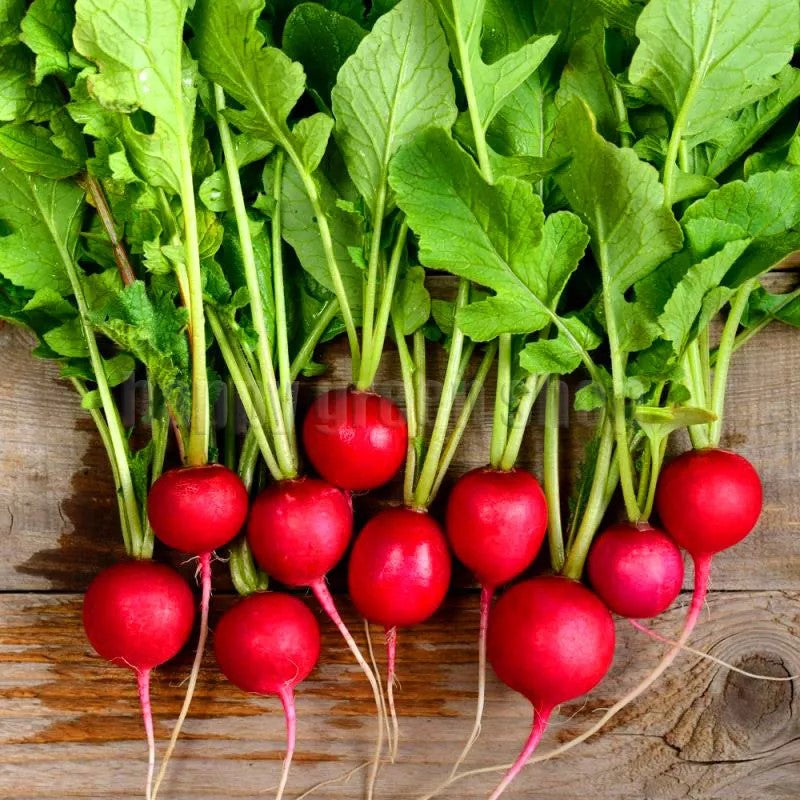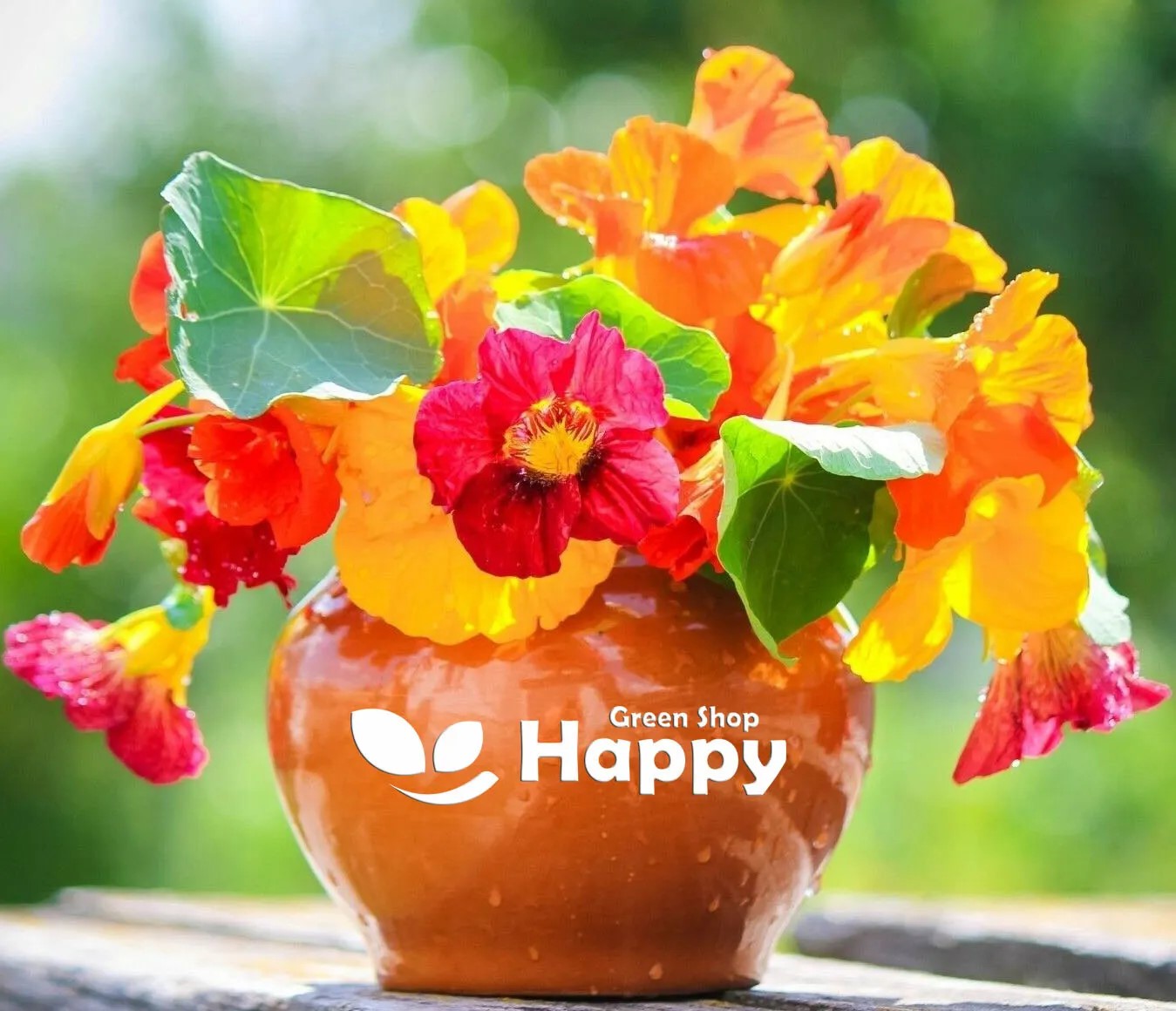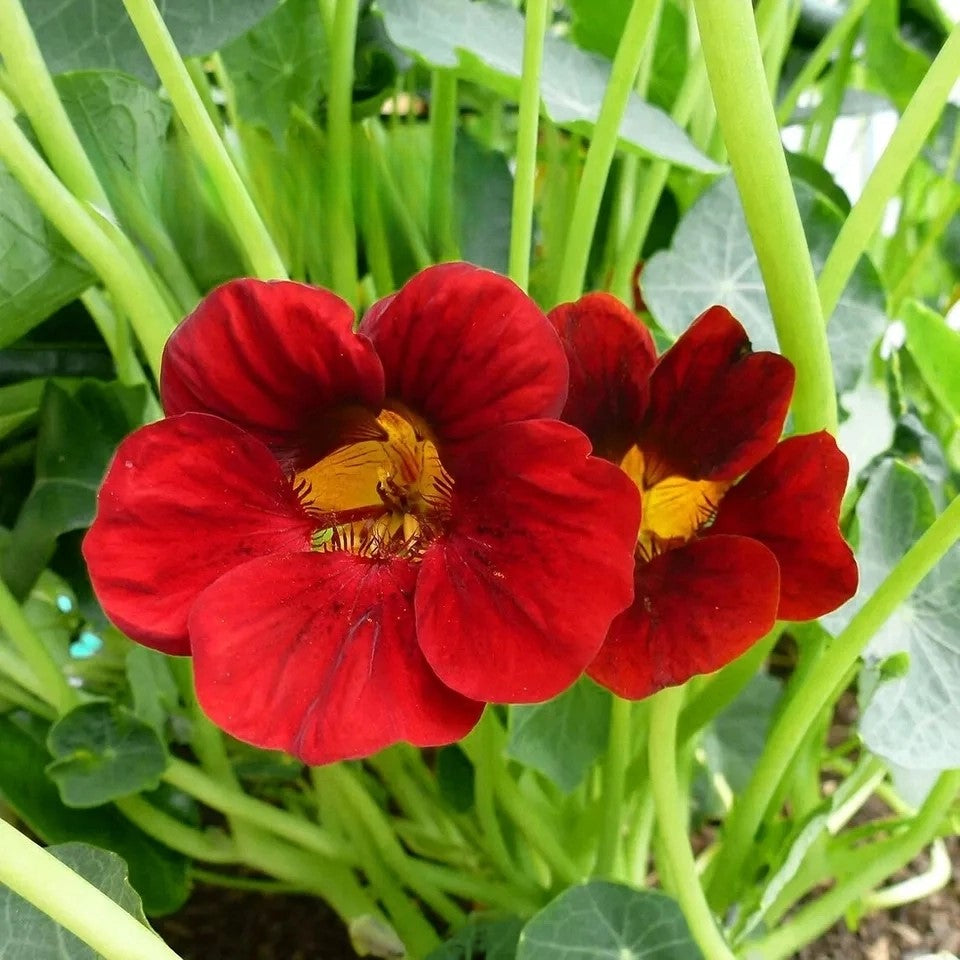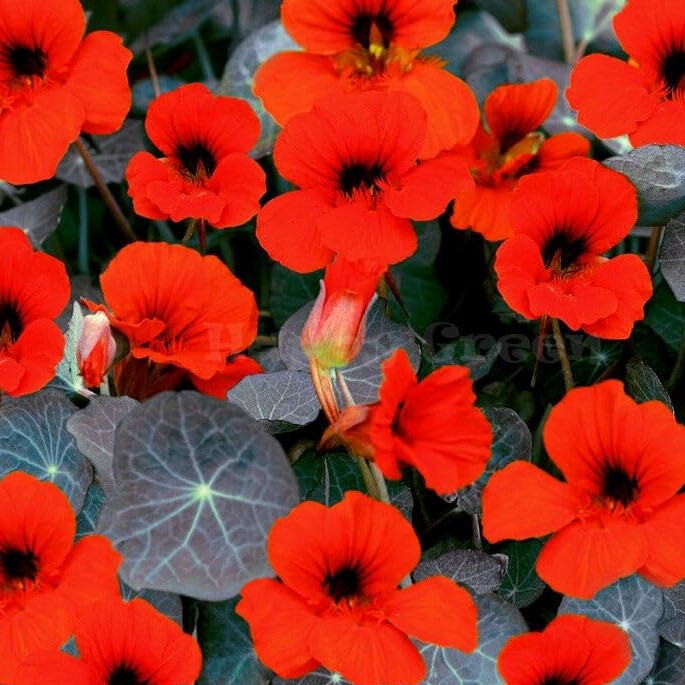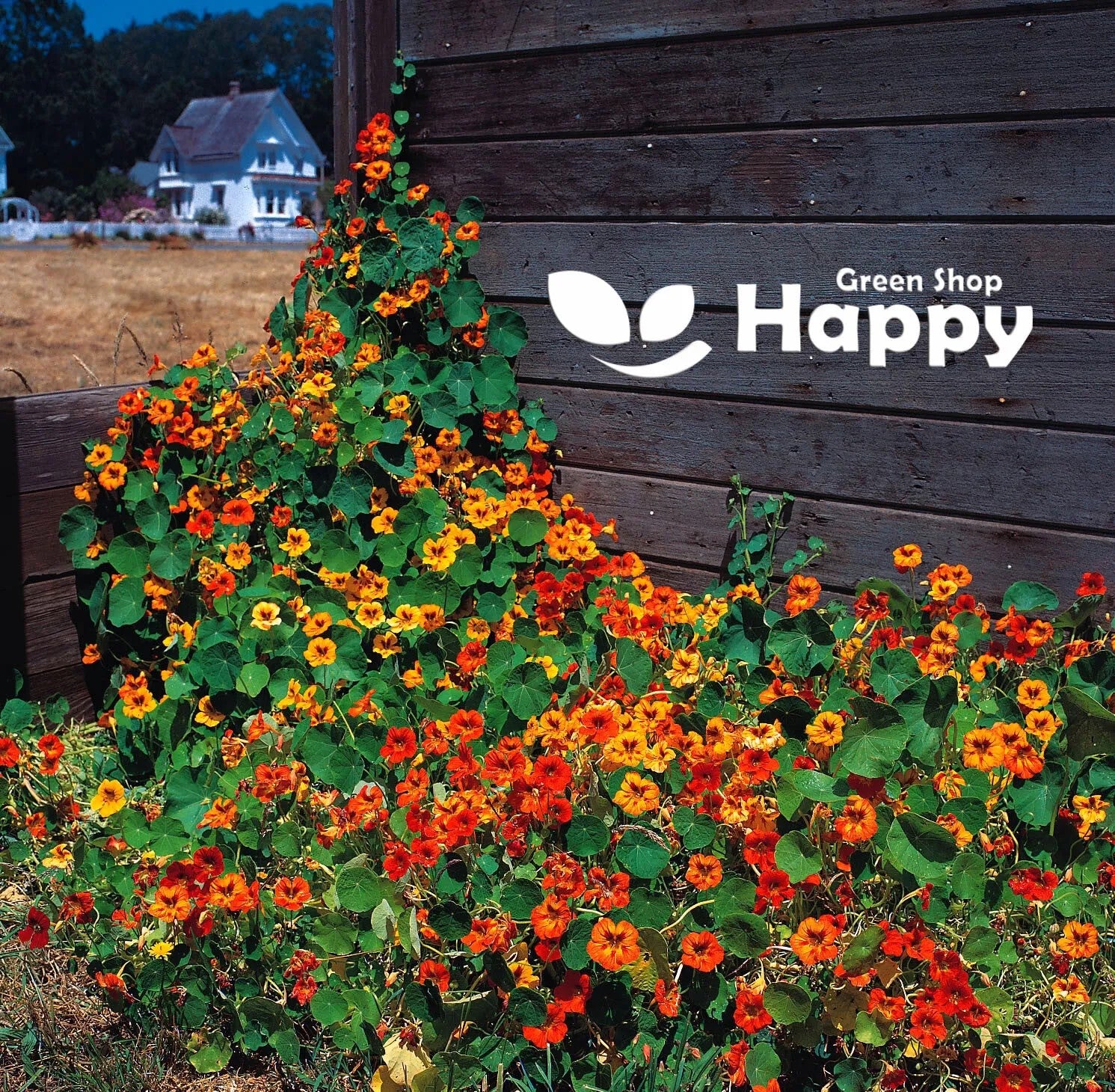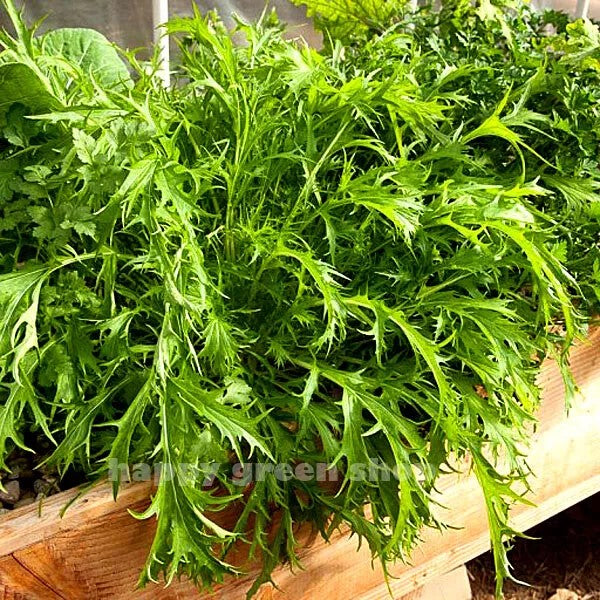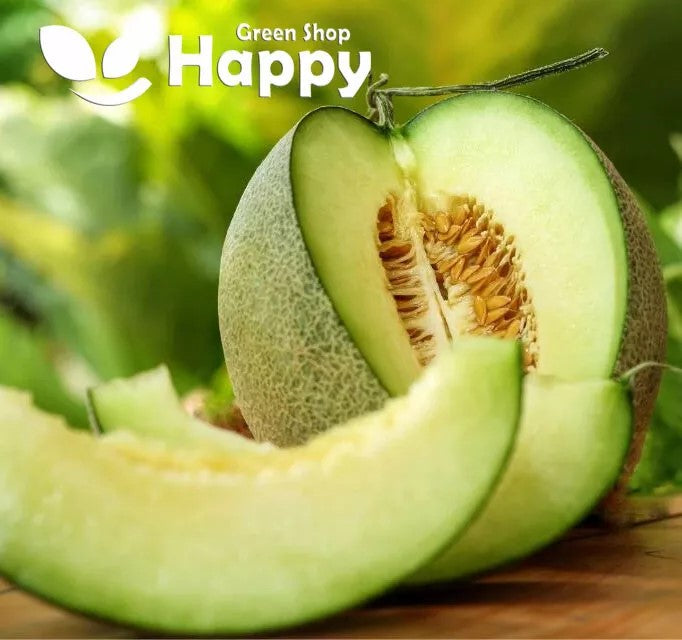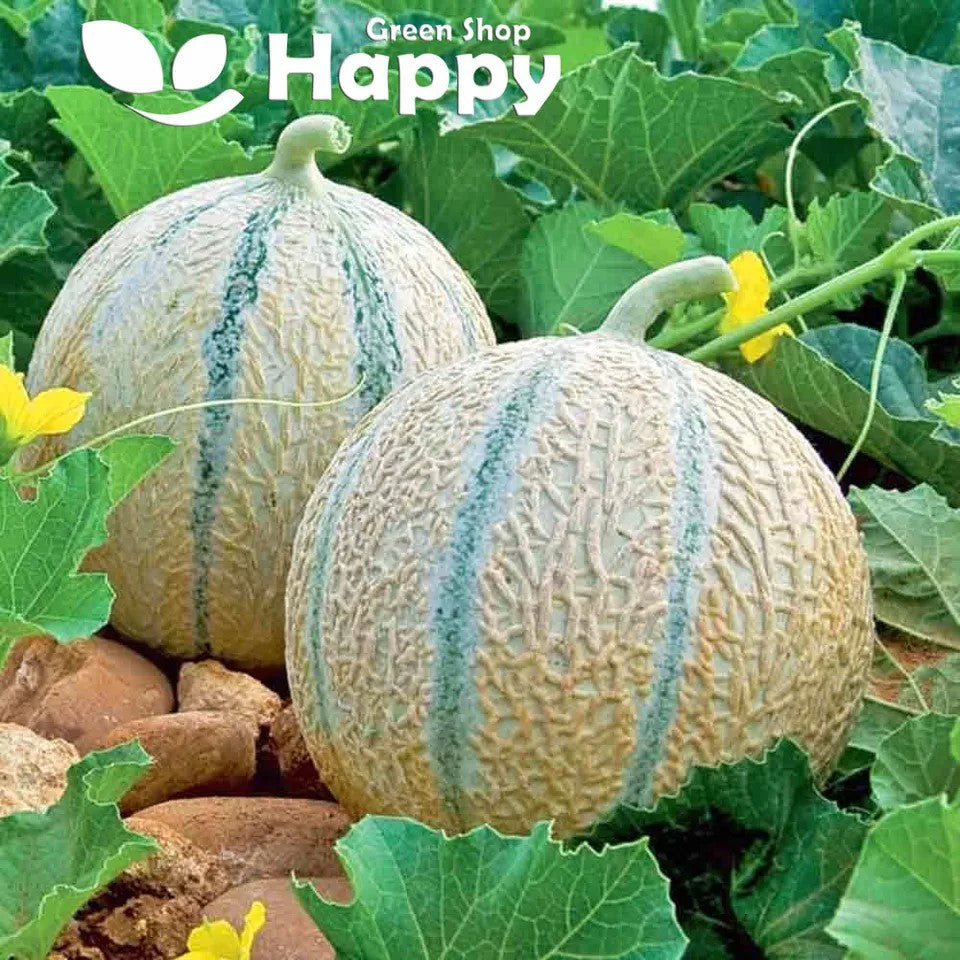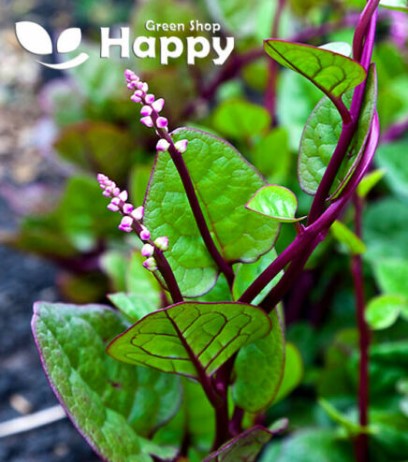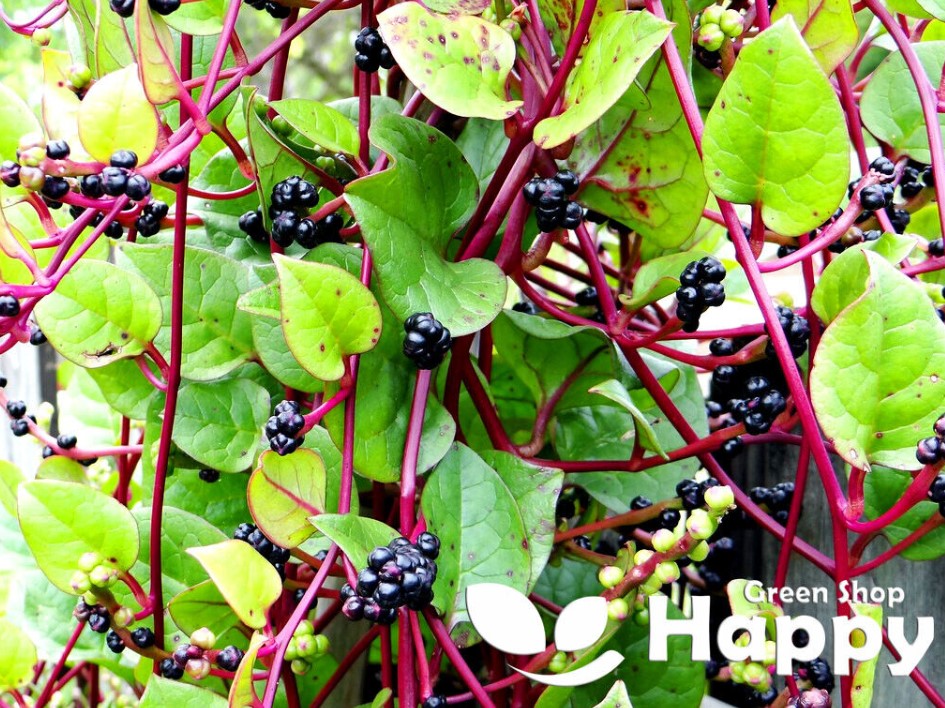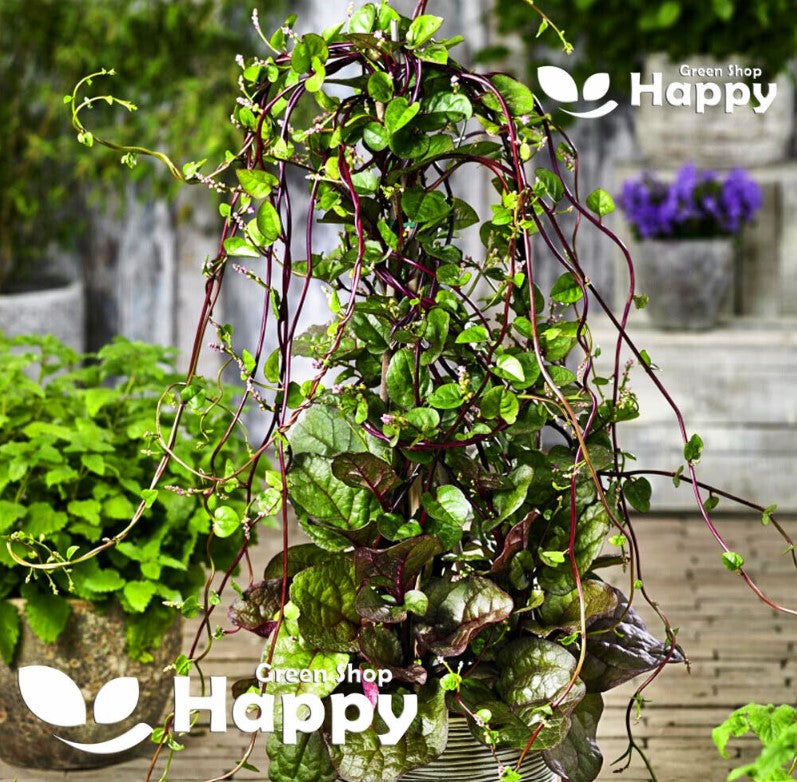Sort by:
225 products
225 products
Nasturtium ‘Out Of Africa’ – 60 Seeds (Tropaeolum majus)
Add a unique touch to your garden with Nasturtium ‘Out Of Africa’, a rare variety admired for its strikingly variegated foliage and vibrant flowers. The creamy-white marbled leaves provide a beautiful backdrop for the classic nasturtium blooms in shades of orange, red, and yellow. A vigorous yet easy-to-grow plant, perfect for borders, beds, hanging baskets, or edible gardens.
Highlights
-
Distinctive cream-variegated leaves with colorful flowers
-
Long-lasting blooms throughout summer and autumn
-
Edible flowers and foliage – peppery flavor for salads and garnishes
-
Hardy and low-maintenance
Key Features
-
Botanical Name: Tropaeolum majus
-
Seed Count: 60
-
Height: 30–40 cm
-
Position: Full sun to partial shade
-
Flowering Period: Summer to first frost
Perfect For
-
Adding foliage contrast to beds and borders
-
Hanging baskets and containers
-
Edible gardens and pollinator-friendly planting
-
Cottage and ornamental gardens
Sowing Instructions
-
Sow indoors 4–6 weeks before last frost or directly outdoors after frost risk has passed
-
Plant seeds 1.5–2 cm deep in well-drained soil
-
Space plants 25–30 cm apart
-
Germination: 10–14 days at 15–20°C
-
Flowers in 8–10 weeks after sowing
Nasturtium ‘Fiery Festival’ Double Red Seeds (Tropaeolum majus)
Nasturtium ‘Fiery Festival’ is a vibrant annual producing fully double, fiery red blooms with a trailing or bushy habit. Blooming from late spring to autumn, it’s perfect for hanging baskets, containers, and garden borders. Hardy, easy to grow, and edible, its colorful flowers also attract pollinators and add a dramatic splash of color to any garden.
What Makes It Special
-
Fully double, fiery red blooms
-
Edible flowers and attractive to pollinators
-
Hardy, low-maintenance, and long-flowering
Key Features
-
Botanical name: Tropaeolum majus
-
Annual
-
Height: 20–40 cm (bushy) or trailing 50–70 cm
-
Bloom time: Late spring to autumn
Ideal For
-
Hanging baskets, containers, and borders
-
Pollinator-friendly gardens
-
Edible flowers for salads and garnishes
Sowing
-
Sow indoors Feb–Apr or outdoors Apr–Jun
-
Cover seeds lightly with soil
-
Germination: 7–14 days at 18–22°C
-
Space seedlings 25–30 cm apart
-
Flowers the same year
Nasturtium ‘Empress of India’ – Seeds (Tropaeolum nanum)
Nasturtium ‘Empress of India’ (Tropaeolum nanum) is a vibrant annual with striking deep red and dark foliage. Its trailing habit makes it perfect for containers, hanging baskets, and garden borders. Edible flowers and leaves add a peppery flavor to salads and garnishes, while the plant attracts pollinators, creating both beauty and utility in your garden.
Why Grow "Empress of India"
-
Deep red blooms with dark, attractive foliage
-
Trailing habit ideal for containers and hanging baskets
-
Edible flowers and leaves with a peppery taste
-
Attracts bees, butterflies, and other pollinators
Key Features
-
Type: Annual (Tropaeolum nanum)
-
Height: 20–30 cm
-
Flowering: June–September
-
Position: Full sun to partial shade
-
Uses: Containers, hanging baskets, borders, edible garden
Ideal For
-
Edible and ornamental garden planting
-
Hanging baskets and container displays
-
Pollinator-friendly gardens
-
Borders and small garden beds
Sowing & Growing
-
Sow indoors: March–April in trays or pots
-
Sow outdoors: After last frost in prepared soil
-
Germination: 7–14 days at 18–22°C
-
Thin seedlings to 20–25 cm apart
-
Prefers well-drained soil and sunny positions
-
Deadhead to encourage continuous flowering
Nasturtium 'Double Gleam Hybrids' Mix – 80 Seeds (Tropaeolum majus)
Fill your garden with vibrant color using Nasturtium 'Double Gleam Hybrids' Mix. This stunning variety produces semi-double blooms in shades of yellow, orange, and red above trailing, rounded foliage. Perfect for borders, hanging baskets, and containers, nasturtiums are also edible, adding color and spice to salads.
Why Grow 'Double Gleam Hybrids'
-
Semi-double, glowing flowers in warm tones
-
Long-lasting summer blooms
-
Attracts pollinators and beneficial insects
-
Edible flowers and leaves
Key Features
-
Type: Hardy annual (Tropaeolum majus)
-
Height: 30–40 cm, trailing
-
Flowering: June–September
-
Position: Full sun or partial shade
-
Uses: Borders, baskets, containers, edible flowers
Ideal For
-
Hanging baskets and window boxes
-
Bright summer bedding
-
Edible gardens and kitchen plots
-
Companion planting to deter pests
Sowing & Growing
-
Sow indoors: March–April in pots
-
Sow outdoors: April–June directly in soil
-
Germination: 7–14 days at 15–20°C
-
Plant spacing: 25–30 cm
-
Prefers poor to moderately fertile soil for best flowering
Mizuna – Seeds (Brassica rapa var. japonica)
A staple of Japanese cuisine, Mizuna is a fast-growing leafy green with elegant, feathery leaves and a mild, peppery flavor. Often used in salads, stir-fries, and soups, it’s highly versatile and easy to grow. Mizuna is also very cold-tolerant, making it an excellent choice for year-round harvests, especially in spring and autumn.
How to Grow
-
Sow outdoors from March to September or under cover in winter for year-round harvest.
-
Sow thinly, 0.5 cm deep, in rows 15–20 cm apart.
-
Prefers moist, fertile, well-drained soil in sun or partial shade.
-
Harvest leaves young for salads or allow plants to mature for cooking.
Key Features
-
Japanese mustard green with feathery leaves
-
Mild, peppery taste – great for salads, stir-fries & soups
-
Fast-growing and highly productive
-
Cold-hardy and suitable for year-round cultivation
-
Cut-and-come-again variety for continuous harvest
Ideal For
-
Asian-inspired cooking
-
Salads, soups, and stir-fries
-
Kitchen gardens, raised beds, or containers
-
Succession sowing for steady supply
Sowing & Harvest
-
Sow: March to September (under cover in winter)
-
Depth: 0.5 cm
-
Spacing: 15–20 cm
-
Harvest: 3–6 weeks after sowing
Quick Tip
-
Regular harvesting of young leaves will extend the cropping period and prevent the plants from bolting.
Melon 'Honeydew' – Seeds (Cucumis melo)
Enjoy the sweet, juicy flavor of Honeydew Melon, a classic variety known for its smooth pale green skin and luscious, pale green flesh. Perfect for fresh summer desserts, smoothies, and fruit salads, Honeydew is a highly rewarding melon for home gardeners. With proper care, it produces medium to large fruits that are sweet, fragrant, and full of summer flavor.
How to Grow
. Sow indoors: March – May, 1–2 cm deep in pots or seed trays
. Transplant outdoors: After last frost, spacing 60–80 cm apart in fertile, well-drained soil
. Sow outdoors: May – June, in warm, sunny locations
. Requires consistent watering and full sun for optimal sweetness
. Harvest: When fruits are heavy, with a waxy bloom on the skin and a sweet aroma
Key Features
. Classic Honeydew melon with smooth pale green skin
. Sweet, juicy, aromatic pale green flesh
. Medium to large fruits for fresh eating and salads
. High-yielding and rewarding summer crop
. Ideal for warm, sunny gardens or greenhouse growing
Ideal For
. Fresh summer desserts, fruit salads, and smoothies
. Home gardens and allotments
. Greenhouse cultivation for earlier harvests
. Gardeners seeking fragrant, sweet melons
Sowing & Harvest
. Sow: March – June
. Harvest: August – September
Quick Tip
For sweeter fruits, provide full sun, warm soil, and consistent watering, and avoid overhead watering to reduce the risk of fungal disease.
Melon 'Charentais' Seeds (Cucumis melo)
Enjoy the taste of France in your garden with Melon 'Charentais' (Cucumis melo). This classic French heirloom variety produces small, round melons with smooth grey-green skin and rich, aromatic orange flesh. Sweet, juicy, and intensely fragrant, it’s the perfect melon for fresh eating, desserts, and gourmet summer salads.
How to Grow
-
Sow seeds indoors 3–4 weeks before the last frost.
-
Use rich, well-drained soil in a warm, sunny spot.
-
Sow seeds 1.5–2 cm deep and keep soil moist until germination (7–10 days).
-
Transplant outdoors after frost, spacing 60–90 cm apart.
-
Harvest when fruits turn fragrant and skin shows slight cracking near the stem.
Key Features
-
Classic French heirloom melon
-
Small, round fruits with smooth grey-green skin
-
Intensely sweet, juicy, and aromatic orange flesh
-
Perfect for fresh eating, desserts, and summer salads
-
Compact vines, ideal for gardens and greenhouses
Ideal For
-
Home gardeners seeking gourmet-quality fruit
-
Fresh summer snacking and desserts
-
Greenhouse, polytunnel, or warm outdoor gardens
-
Lovers of fragrant, sweet melons
Sowing
-
Best time: Indoors 3–4 weeks before last frost
-
Depth: 1.5–2 cm
-
Spacing: 60–90 cm apart
-
Prefers full sun and rich, well-drained soil
Quick Tip
-
For the sweetest flavor, allow melons to ripen fully on the vine before picking.
Marigold Orange 'Gitana' Seeds (Calendula officinalis)
Fill your garden with a burst of sunshine! Marigold Orange 'Gitana' is a compact variety producing masses of vivid orange blooms all summer long. Perfect for borders, pots, and cutting, these cheerful flowers are also edible—ideal for garnishes, salads, or herbal uses. Hardy and reliable, they thrive in almost any soil.
What Makes It Special
-
Dazzling deep orange flowers in abundance
-
Compact, bushy plants perfect for small spaces
-
Long-lasting blooms for months
-
Petals are edible and attractive to pollinators
Key Features
-
Pack Size: 150 seeds
-
Height: 25–35 cm
-
Annual, bushy growth habit
-
Easy to grow, even for beginners
Ideal For
-
Beds, borders, and cottage gardens
-
Pots and containers
-
Cutting gardens
-
Companion planting with vegetables
Sowing
-
Sow outdoors Mar–May in well-drained soil, full sun
-
Lightly cover seeds with fine soil
-
Germination: 7–14 days
-
Thin seedlings to 20–25 cm apart
Malabar Spinach – Seeds (Basella alba)
Malabar Spinach is a fast-growing, tropical vine known for its thick, succulent leaves and high nutritional value. Ideal for salads, stir-fries, soups, and garnishes, this heat-tolerant leafy green thrives where traditional spinach struggles.
Its vigorous climbing habit makes it perfect for trellises, fences, or vertical garden spaces. Malabar Spinach is not only delicious but also adds lush greenery and ornamental appeal to any garden.
How to Grow
-
Sow indoors: February – April
-
Sow outdoors: After last frost, spacing 30–40 cm apart
-
Position: Full sun to partial shade
-
Soil: Fertile, well-drained soil enriched with compost
-
Care: Water regularly; provide support for climbing; pinch tips to encourage bushier growth
Key Features
-
Fast-growing, heat-tolerant leafy green
-
Thick, succulent leaves perfect for salads, stir-fries, and soups
-
Vigorous climbing vine suitable for trellises or fences
-
Adds ornamental greenery to gardens
-
Easy to grow and high-yielding
Harvest
-
Harvesting period: 50–70 days after sowing
-
Pick young leaves regularly for the best flavor and tender texture.
Short Tip
Provide a trellis or support for climbing; regular harvesting promotes continuous growth and keeps leaves tender.
Showing 126/225



